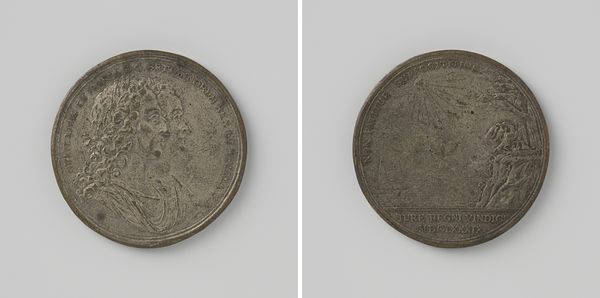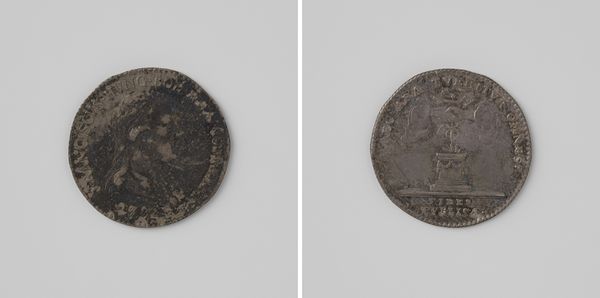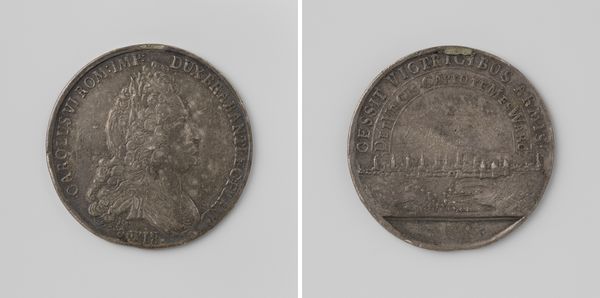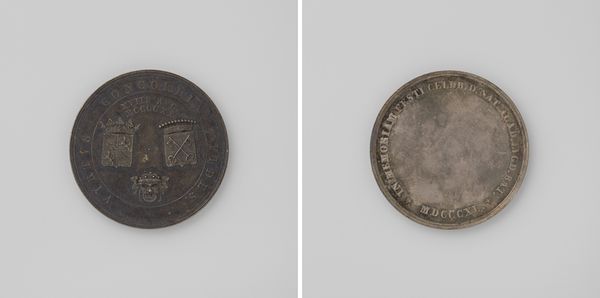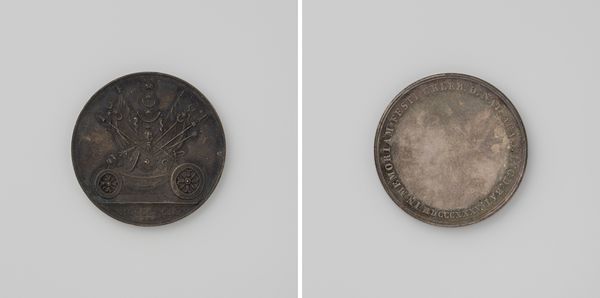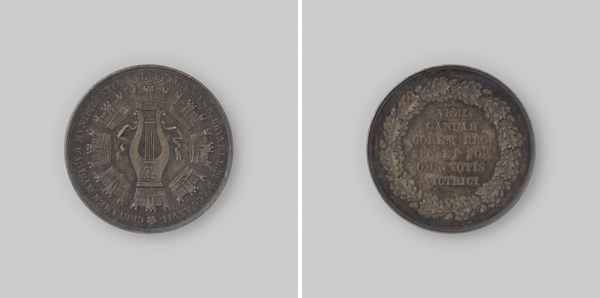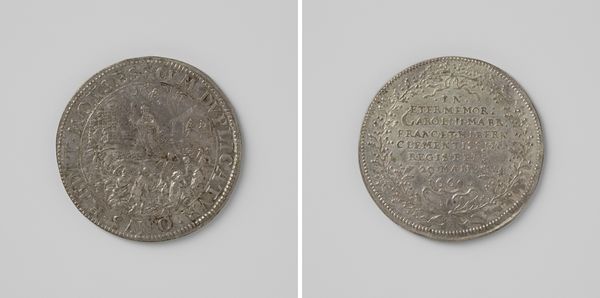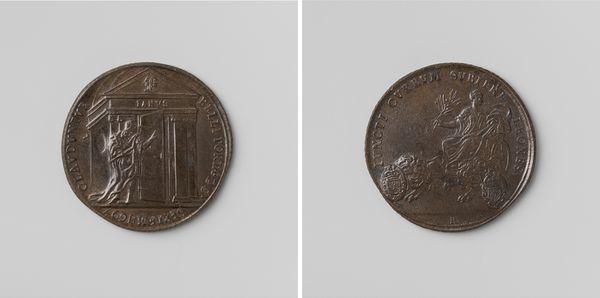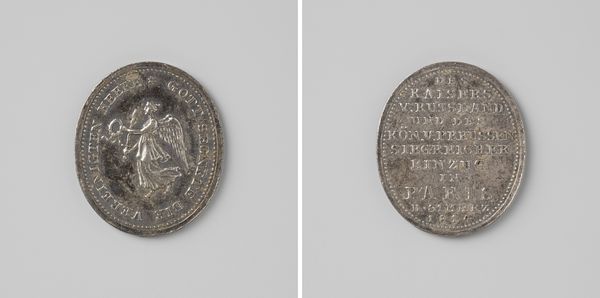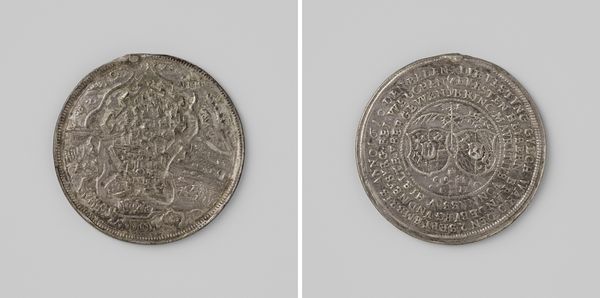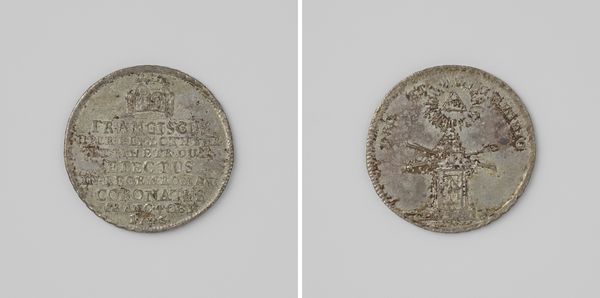
metal, engraving
#
baroque
#
metal
#
history-painting
#
engraving
Dimensions: diameter 2.2 cm, weight 2.38 gr
Copyright: Rijks Museum: Open Domain
Curator: Here we have a Baroque-style medal from 1742. It commemorates the coronation of Charles VII as Holy Roman Emperor in Frankfurt. The Rijksmuseum holds this anonymous piece of history, crafted from metal through engraving. Editor: My first impression is that it seems like a very self-important object, the way monarchs immortalize their own narratives. Yet it also feels so fragile, like a single coin containing immense weight. Curator: Yes, such medals were tools of political theater and, essentially, propaganda. The image immortalizes a specific moment in the power dynamics of the Holy Roman Empire. Charles’s rule was contentious, wasn’t it? Editor: Exactly! He came to power during the War of the Austrian Succession, which already casts his coronation as emperor under a certain light, historically. The image becomes less about pure celebration and more about legitimacy. Curator: Consider the visual language though; the symbolic weight of his profile, encircled by Latin text. Or the scene on the reverse side, with a platform, rays of light, all carefully placed within this small circular frame. What meaning would this bear for contemporaries? Editor: Those visual components you describe serve the intended grandeur of his rule, don't they? The engraving almost sanctifies the act with the light beams, despite the historically weak foundation of his emperorship. Curator: Medals such as this speak to the performative nature of power. Rulers aren't simply powerful, but must visibly perform power to solidify their position in the public's eyes. It illustrates the symbolic role visual messaging plays. Editor: Which makes it so compelling for study even today, isn’t it? We see an echo of our own political imagery, that desire for legacy carefully constructed within this metal circle, but that circle is limited and doesn't last. Curator: Indeed, a tiny, tangible reminder of a complex historical moment, political maneuvering and, in its way, of humanity’s ongoing project to secure and preserve its own story. Editor: Agreed, I find it’s a rather insightful peek into the theatrical face of historical authority, especially because these historical nuances ripple through our present day just as they did centuries before.
Comments
No comments
Be the first to comment and join the conversation on the ultimate creative platform.
